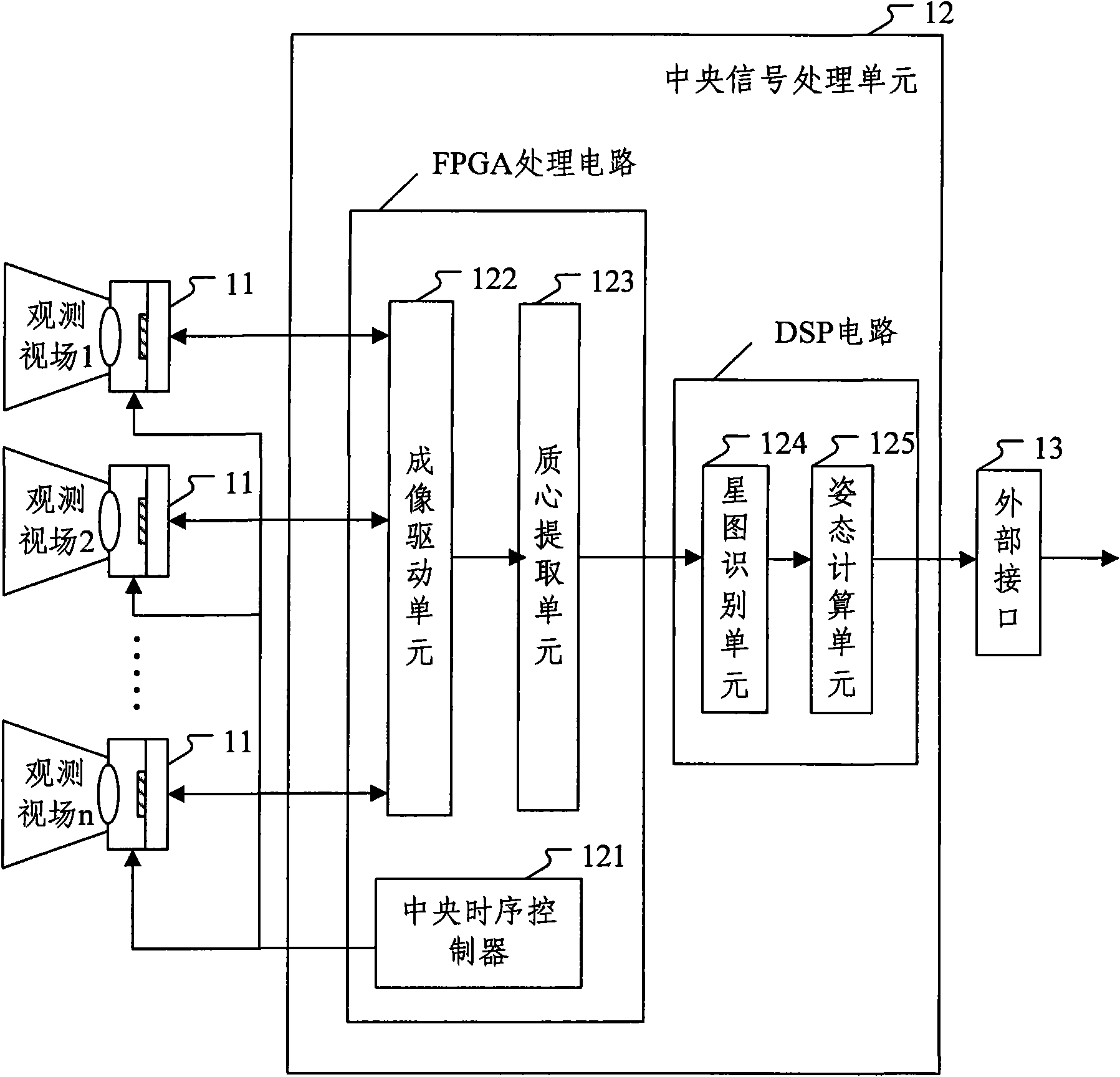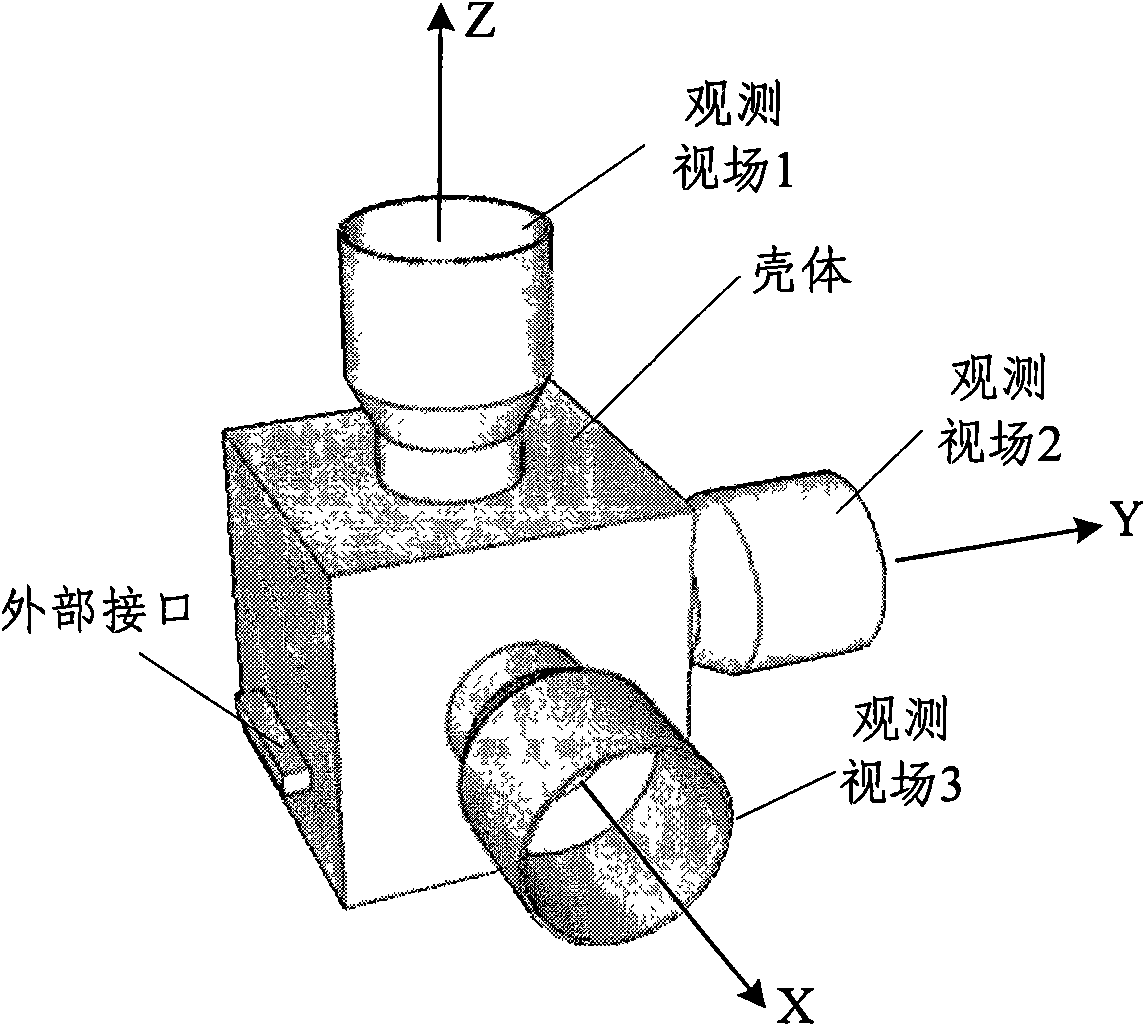Self-adaptive controlled-array star sensor
A sensor, self-adaptive technology, applied in photo interpretation, integrated navigator and other directions, can solve the problems of star point energy attenuation, star stray light interference, poor dynamic performance, etc., achieve high attitude measurement and output, save power consumption and cost, and the effect of improving measurement reliability
- Summary
- Abstract
- Description
- Claims
- Application Information
AI Technical Summary
Problems solved by technology
Method used
Image
Examples
Embodiment Construction
[0047] The basic idea of the present invention is to set up multiple observation fields of view, each observation field of view is installed and arranged in a certain form, and its timing is controlled by the central timing controller, thereby forming a controllable array, referred to as "control array", self-adaptive The control array star sensor has synchronous mode and asynchronous mode.
[0048] In order to make the object, technical solution and advantages of the present invention clearer, the present invention will be further described in detail by citing the following embodiments and referring to the accompanying drawings.
[0049] figure 1 It is a structural schematic diagram of the self-adaptive control array star sensor of the present invention, as figure 1As shown, the adaptive array star sensor of the present invention generally includes: a plurality of observation fields of view 11, a central signal processing unit 12 and an external interface 13, wherein each ...
PUM
 Login to View More
Login to View More Abstract
Description
Claims
Application Information
 Login to View More
Login to View More - Generate Ideas
- Intellectual Property
- Life Sciences
- Materials
- Tech Scout
- Unparalleled Data Quality
- Higher Quality Content
- 60% Fewer Hallucinations
Browse by: Latest US Patents, China's latest patents, Technical Efficacy Thesaurus, Application Domain, Technology Topic, Popular Technical Reports.
© 2025 PatSnap. All rights reserved.Legal|Privacy policy|Modern Slavery Act Transparency Statement|Sitemap|About US| Contact US: help@patsnap.com



